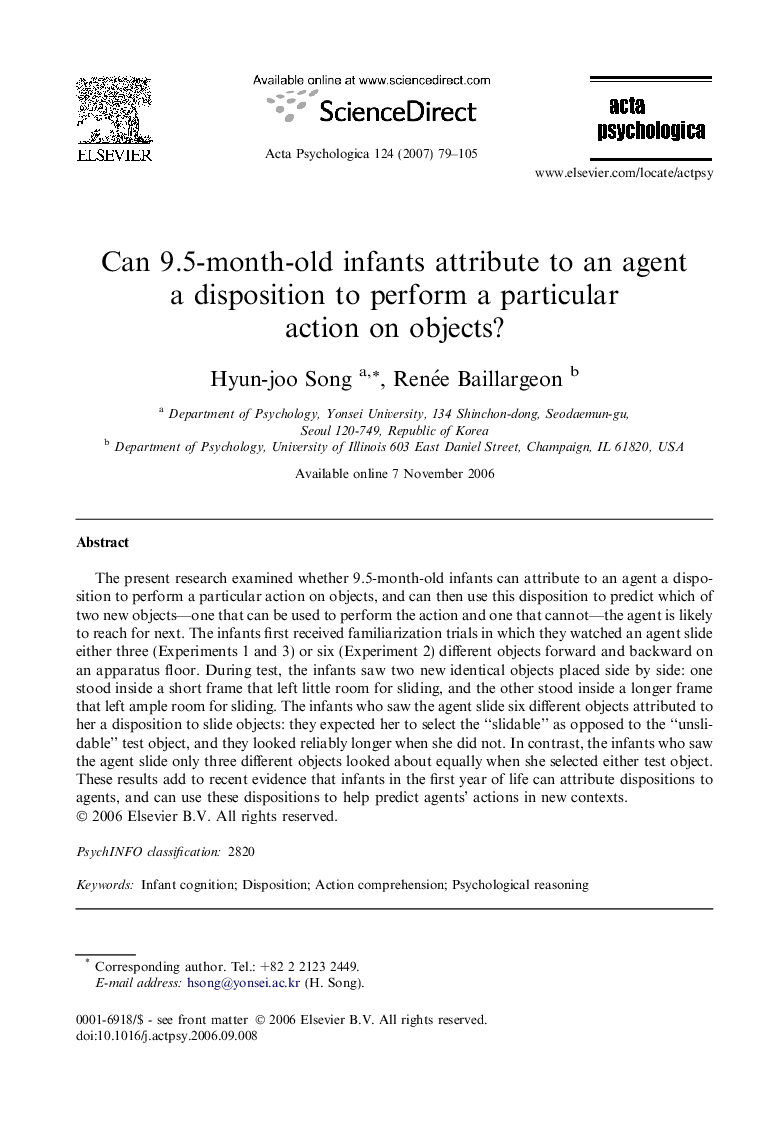| Article ID | Journal | Published Year | Pages | File Type |
|---|---|---|---|---|
| 920592 | Acta Psychologica | 2007 | 27 Pages |
The present research examined whether 9.5-month-old infants can attribute to an agent a disposition to perform a particular action on objects, and can then use this disposition to predict which of two new objects—one that can be used to perform the action and one that cannot—the agent is likely to reach for next. The infants first received familiarization trials in which they watched an agent slide either three (Experiments 1 and 3) or six (Experiment 2) different objects forward and backward on an apparatus floor. During test, the infants saw two new identical objects placed side by side: one stood inside a short frame that left little room for sliding, and the other stood inside a longer frame that left ample room for sliding. The infants who saw the agent slide six different objects attributed to her a disposition to slide objects: they expected her to select the “slidable” as opposed to the “unslidable” test object, and they looked reliably longer when she did not. In contrast, the infants who saw the agent slide only three different objects looked about equally when she selected either test object. These results add to recent evidence that infants in the first year of life can attribute dispositions to agents, and can use these dispositions to help predict agents’ actions in new contexts.
